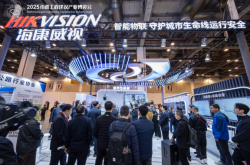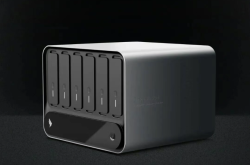Forbes: The Two-Way Heroic Duel in the Trillion-Dollar Autonomous Driving Arena! China's Challenger Baidu Apollo Go Boasts Operating Costs Merely 1/7 of Its U.S. Counterpart Waymo
![]() 09/10 2025
09/10 2025
![]() 671
671
Introduction
Recently, Forbes' mention of a "trillion-dollar opportunity" has catapulted both Waymo and Baidu Apollo Go into the limelight.
The narrative reads like a blockbuster: the U.S. contender Waymo is revered as a technological titan, while China's Apollo Go commands a global presence with operating costs just a fraction (1/7) of Waymo's, having amassed 14 million orders across 16 cities. Even Silicon Valley's seasoned investor Bill Gurley proclaimed it to be "undervalued."
Yet, within this trillion-dollar market, the entry barriers are high—only these two companies have achieved true large-scale commercial operations on a global scale.
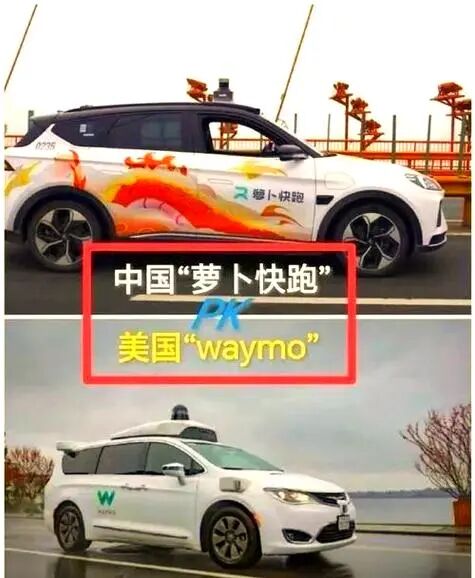
I. Cost: The Key to 'Large-Scale' Operations
Waymo's vehicle costs approximately 1.4 million RMB, whereas Apollo Go's sixth-generation model costs just over 200,000 RMB, drastically reducing the return on investment to 1/7.
Do not underestimate this figure—it implies that with $1 billion, Waymo can deploy 7,000 vehicles, while Baidu can roll out 50,000—a quantitative advantage that unlocks economies of scale.
More critically, low costs make "Robotaxi services cheaper than traditional ride-hailing" a tangible reality:
In Wuhan, a 7km ride with Apollo Go costs just 12 RMB, 30% cheaper than Didi Express, prompting users to choose it overwhelmingly.
Recently, renowned U.S. venture capitalist Bill Gurley, after experiencing Baidu's Apollo Go, commented on its spaciousness and significantly lower costs compared to Waymo.
II. Real-World Validation Trumps Technological Flashiness
Waymo has been showcasing its technology in Phoenix and San Francisco for years, but the dispersion of U.S. cities and fragmented regulations make expansion akin to a game of "whack-a-mole."
China's dense urban clusters and contiguous "pilot zones" facilitate faster replication for Apollo Go:
Hundreds of vehicles operating in Wuhan, full coverage of Beijing's 5th-6th Ring Roads, and securing the Middle East's first commercial Robotaxi license in Dubai—a clear path to international expansion.
As Gurley put it after his ride: "Apollo Go is roomier than Waymo, and more importantly, it's right outside my hotel, ready to pick me up."
III. Capital Markets Cast Their Votes with Cash
Baidu's stock reached a six-month high, with Citi setting a target price of $145.84 per share, implying a market capitalization exceeding HK$1 trillion.
Why?
Apollo Go's revenue curve is steepening: Q2 orders surged 148% year-on-year, with management revealing that per-vehicle models in some cities are nearing break-even.
Behind the market euphoria lies sustained optimism from international investment banks regarding Baidu's AI and autonomous driving capabilities.
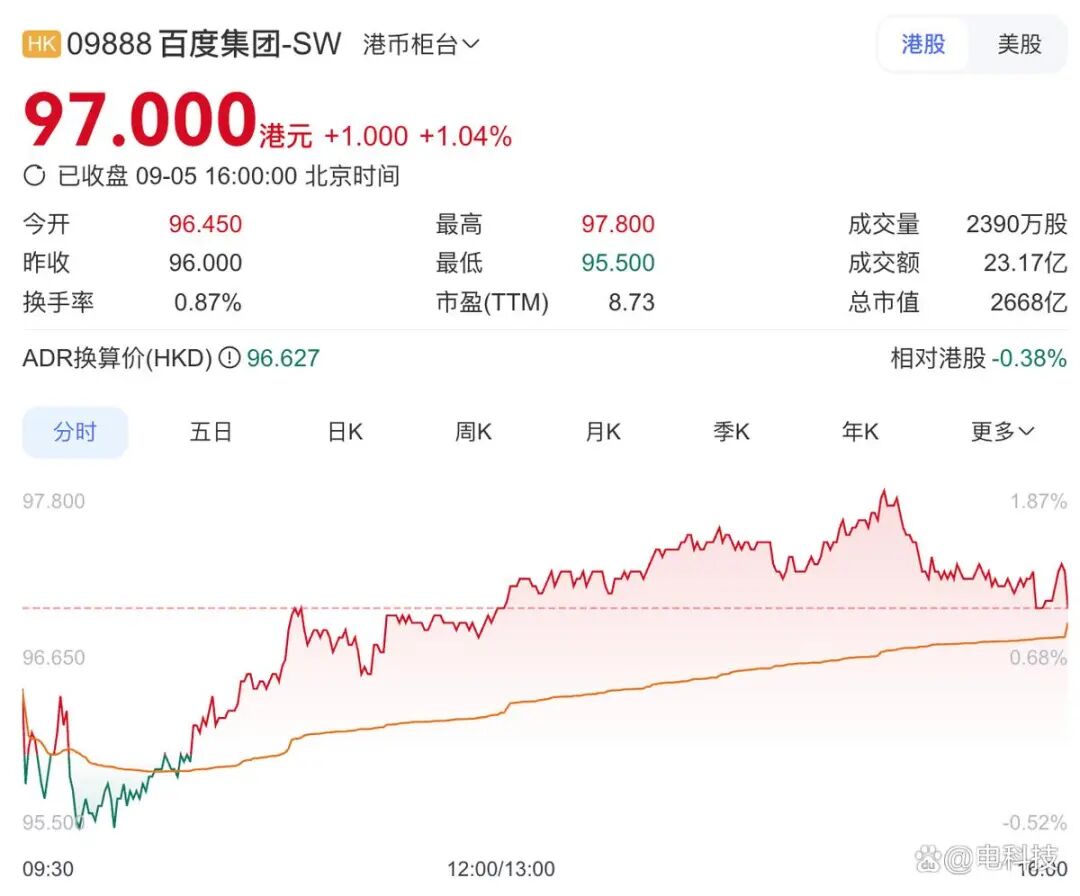
On the news front, Nasdaq analysts raised Baidu's target price to $133, with Citi and others setting a peak target of $145.84.
Goldman Sachs' latest report highlights Baidu's global leadership in autonomous driving commercialization, granting it a "buy" rating.
The capital market's response underscores that autonomous driving is no longer a mere technological vision but a new growth engine for enterprises.
Recently, Forbes magazine pointed out that Waymo, Google's autonomous driving subsidiary, represents a "trillion-dollar opportunity." If Google capitalizes on this, Waymo's revenue could surpass its advertising business.
Once the fleet size reaches a thousand units, profit margins will far exceed those of search ads. (Apollo Go has already achieved this scale.)
Nasdaq analysts bluntly stated: "If Waymo is Google's advertising backup, Apollo Go is Baidu's next cash cow."
IV. Behind the Cost Curve Lies a Robust Tech Stack
The sixth-generation autonomous vehicle employs Baidu's proprietary "Apollo Galaxy" platform, featuring domestically produced drive-by-wire chassis, computing units, and sensors, ensuring supply chain bargaining power;
A single Orin X chip delivers 254 TOPS, but Baidu's model distillation techniques enable one chip to perform like two, slashing hardware costs by 40%;
Vehicle-infrastructure coordination, coupled with V2X alerts, informs vehicles of traffic lights and construction zones 500 meters ahead, reducing abrupt stops and boosting energy efficiency. This saves 3 kWh per vehicle daily, cutting annual operating costs by another 2,000 RMB.
V. Risks Persist: Geopolitics and Edge Cases
International geopolitics, data cross-border flows, and local road access rights remain variables;
Moreover, L4's long-tail corner cases remain unresolved, with any severe accident potentially triggering "policy brakes."
Yet, as Gurley noted: The era of "zero enterprise value" is over, but with a technological edge and cost advantages, Baidu deserves a closer look.
VI. Future Outlook: 2026 as a Pivotal Year
If Baidu's Apollo Go deploys 10,000 Robotaxis, serves 100 million orders, and achieves positive per-vehicle net profits in the coming years, its ride-hailing business alone could be valued at $30 billion—
Equivalent to recreating a "Baidu Core Search" in the autonomous driving sector.
Then, the competition between Waymo and Apollo Go will truly enter the "profit phase."
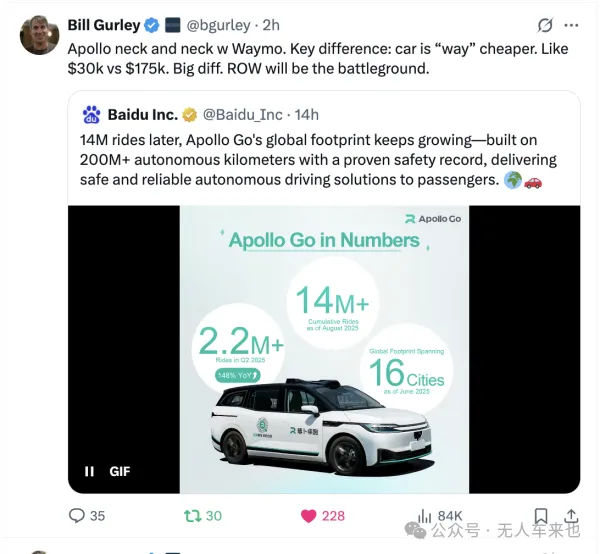
In Summary
The WeChat official account "Self-Driving Vehicle Era" believes:
The outcome of this two-way heroic duel will shape the entire autonomous driving industry.
If Baidu sustains its cost edge and achieves global expansion, it could overtake rivals to dominate this trillion-dollar market.
Waymo, meanwhile, must prove that its technological superiority translates into commercial success, especially beyond the U.S.
Regardless of the outcome, this rivalry will accelerate the adoption of autonomous driving, ultimately transforming the transportation sector.
#SelfDrivingVehicleEra #SelfDriving #AutonomousDriving #SelfDrivingCars #FirstHalfOf2025

